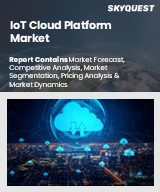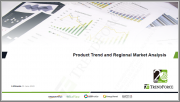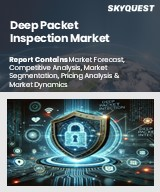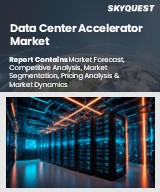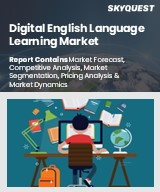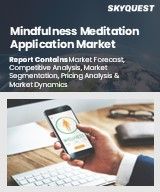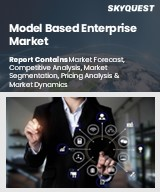
|
시장보고서
상품코드
1447127
세계의 하이퍼스케일 클라우드 시장 예측 : 서비스 유형별, 기업 유형별, 용도별, 최종 사용자별, 지역별 분석(-2030년)Hyperscale Cloud Market Forecasts to 2030 - Global Analysis By Service Type (Infrastructure as a Service, Software as a Service and Platform as a Service ), By Enterprise Type, Application, End User and By Geography |
||||||
Stratistics MRC에 따르면 세계의 하이퍼스케일 클라우드 시장은 2023년에 2,338억 4,000만 달러를 차지하였고, 2030년에는 1조 9,917억 3,000만 달러에 이를 것으로 예측됩니다.
하이퍼스케일 클라우드는 대규모 워크로드 및 고수요 애플리케이션을 지원하도록 설계된 클라우드 컴퓨팅 인프라의 일종입니다. 대량의 데이터 및 사용자 트래픽을 수용하기 위해 수천 대의 서버와 스토리지 시스템을 갖춘 대규모 데이터센터를 배포합니다. 하이퍼스케일 클라우드 제공업체는 세계 기업 및 조직에 확장 가능한 온디맨드 컴퓨팅 리소스와 서비스를 제공합니다.
시장 리서치사 Canalys에 따르면 클라우드 서비스 제공업체의 상위 3개사는 보급과 규모 확대로부터 이익을 얻고 있으며 전년대비 42% 증가, 세계 소비자 지출의 62%에 공헌하고 있습니다.
각 업계에서 진행되는 디지털 변환
기업은 업무의 현대화, 데이터의 효율적인 관리, 디지털 서비스 제공을 위해 클라우드 기반 기술을 채택하는 경향이 강해지고 있으며, 하이퍼스케일 클라우드 솔루션에 대한 수요가 증가하고 있습니다. 하이퍼스케일 클라우드 솔루션은 확장성, 민첩성, 비용 효율성을 제공하여 변화하는 시장 환경과 고객의 요구에 신속하게 대응할 수 있습니다. 또한 하이퍼스케일 클라우드 제공업체는 컴퓨팅, 스토리지 및 네트워킹을 포함한 광범위한 서비스를 제공하며 업계를 뛰어넘는 다양한 디지털 변환 노력을 지원합니다.
지연 문제
하이퍼스케일 클라우드 시장에서는 사용자와 클라우드 데이터센터 간의 물리적 거리로 인해 지연 문제가 억제요인이 되고 있습니다. 하이퍼스케일 클라우드 인프라의 확장성과 고성능 기능에도 불구하고, 특히 실시간 처리 및 고속 연결이 필요한 용도에서는 데이터 전송 지연이 발생할 수 있습니다. 이는 사용자 경험, 용도 성능 및 전반적인 생산성에 영향을 줄 수 있으며 시장 확대를 제한하는 요인이 되었습니다.
하이브리드 클라우드 모델 채택 확대
하이브리드 클라우드 컴퓨팅은 온프레미스 인프라와 퍼블릭 및 프라이빗 클라우드 서비스를 결합하여 기업이 두 환경의 이점을 모두 활용할 수 있습니다. 하이퍼스케일 클라우드 제공업체는 원활한 통합 및 관리 기능을 제공하여 기업이 워크로드 배치를 최적화하고 데이터 보안을 강화하며 유연성과 확장성을 높일 수 있습니다. 하이브리드 클라우드 구축의 요구에 부응함으로써 하이퍼스케일 클라우드 제공업체는 더 큰 시장 점유율을 확보하고 추가 성장을 가속할 수 있습니다.
하이퍼스케일 클라우드 제공업체 간의 치열한 경쟁
하이퍼스케일 클라우드 제공업체 간의 치열한 경쟁은 시장에 위협을 가하고 있습니다. Amazon Web Services(AWS), Microsoft Azure, Google Cloud Platform과 같은 선도적인 공급업체가 시장 점유율을 중심으로 치열하게 경쟁하고 있기 때문에 고객 획득을 위한 적극적인 가격 전략 및 서비스 강화를 위해 노력할 수 있습니다. 그 결과 공급자 마진이 압박되어 수익성이 저하될 수 있습니다. 게다가, 소규모 공급업체들은 이러한 업계 선도자들과의 경쟁에 어려움을 겪을 수 있으며, 하이퍼스케일 클라우드 시장에서의 성장 기회 및 시장에서의 존재감이 제한될 수 있습니다.
COVID-19의 영향 :
COVID-19의 유행은 하이퍼스케일 클라우드 시장에 긍정적인 영향을 미쳤습니다. 기업은 원격 업무, 온라인 교육 및 디지털 서비스에 대한 의존도를 높이기 위해 디지털 변환에 대한 노력을 가속화했기 때문입니다. 하이퍼스케일 클라우드 솔루션을 포함한 클라우드 인프라와 서비스에 대한 이러한 수요의 급증은 공급자들에게 도입과 수익 증가로 이어졌습니다. 또한, 유행은 비즈니스 연속성과 탄력성을 가능하게 하는 클라우드 컴퓨팅의 중요성을 강조했습니다.
예측 기간 동안 SaaS(Software-as-a-Service) 부문이 최대가 될 전망
하이퍼스케일 클라우드 시장에서는 SaaS 부문이 예측 기간 동안 최대가 될 것으로 예상됩니다. 이는 업종에 상관없이 클라우드 기반 용도의 채용이 증가하고 있는 것, 구독 기반의 가격 설정 모델의 편의성, SaaS 솔루션의 확대성 때문입니다. 또한 기업은 소프트웨어 접근성, 유연성 및 배포의 용이성을 우선시하므로 하이퍼스케일 클라우드 인프라 내에서 SaaS 제공 제품에 대한 수요가 높아지고 시장에서 동일한 부문 성장이 더욱 확실시되고 있습니다.
사물 인터넷(IoT) 부문은 예측 기간 동안 가장 높은 CAGR이 예상됩니다.
하이퍼스케일 클라우드 시장에서는 예측 기간 동안 사물 인터넷(IoT) 부문이 가장 높은 CAGR을 기록할 것으로 예측됩니다. 이러한 성장은 다양한 산업에서 연결된 장치가 급증하고 클라우드에서 처리 및 분석을 필요로 하는 엄청난 양의 데이터를 생성한다는 배경입니다. 또한 하이퍼스케일 클라우드 인프라는 IoT 용도을 지원하는 데 필요한 확장성, 스토리지 및 컴퓨팅 능력을 제공하여 클라우드 기반 IoT 솔루션 및 서비스 채택을 촉진합니다.
최대 점유율을 차지하는 지역 :
북미는 Amazon Web Services(AWS), Microsoft Azure, Google Cloud Platform 등 주요 하이퍼스케일 클라우드 제공업체가 본사를 두고 있기 때문에 하이퍼스케일 클라우드 시장을 독점하는 자세입니다. 또한 북미는 견고한 IT 인프라를 자랑하며 업계 전체에서 디지털화가 진행되고 있으며, 클라우드 기술의 도입도 빠르기 때문에 하이퍼스케일 클라우드의 솔루션과 서비스에 대한 수요가 높아지고 있습니다.
CAGR이 가장 높은 지역 :
아시아태평양은 다양한 업계의 기업들이 클라우드 컴퓨팅 기술을 채택하고 있기 때문에 하이퍼스케일 클라우드 시장의 급성장이 예상되고 있습니다. 또한 중국, 인도, 싱가포르 등 국가에서는 디지털 전환에 대한 노력이 활발해지고 데이터센터 인프라가 확대되고 있습니다. 또한 디지털 혁신에 대한 정부의 지원 및 통신 인프라 투자도 하이퍼스케일 클라우드 시장에서 이 지역의 성장 가능성을 높이고 있습니다.
무료 맞춤설정 서비스 :
이 보고서를 구독하는 고객은 다음 무료 맞춤설정 옵션 중 하나를 사용할 수 있습니다.
- 기업 프로파일
- 추가 시장 진출기업의 종합적 프로파일링(3개사까지)
- 주요 기업의 SWOT 분석(3개사까지)
- 지역 세분화
- 고객의 관심에 응한 주요국 시장 추정, 예측 및 CAGR(주 : 타당성 확인에 따름)
- 경쟁 벤치마킹
- 제품 포트폴리오, 지리적 존재, 전략적 제휴에 기반한 주요 기업 벤치마킹
목차
제1장 주요 요약
제2장 서문
- 개요
- 이해관계자
- 조사 범위
- 조사 방법
- 데이터 광업
- 데이터 분석
- 데이터 검증
- 조사 접근
- 조사 소스
- 1차 조사 소스
- 2차 조사 소스
- 전제조건
제3장 시장 동향 분석
- 서문
- 성장 촉진요인
- 억제요인
- 기회
- 위협
- 용도 분석
- 최종 사용자 분석
- COVID-19의 영향
제4장 Porter's Five Forces 분석
- 공급기업의 협상력
- 구매자의 협상력
- 대체품의 위협
- 신규 참가업체의 위협
- 경쟁 기업간 경쟁 관계
제5장 세계의 하이퍼스케일 클라우드 시장 : 서비스 유형별
- 서문
- IaaS(Infrastructure-as-a-Service)
- 컴퓨팅
- 스토리지
- 네트워킹
- 보안 기능
- SaaS(Software-as-a-Service)
- 협업 도구
- CRM 솔루션
- 기업 자원 계획(ERP)
- PaaS(Platform-as-a-Service)
- 용도 개발 플랫폼
- 통합 플랫폼
- 데이터 관리 플랫폼
제6장 세계의 하이퍼스케일 클라우드 시장 : 기업 유형별
- 서문
- 대기업
- 중소기업
제7장 세계의 하이퍼스케일 클라우드 시장 : 용도별
- 서문
- 클라우드 컴퓨팅
- 퍼블릭 클라우드
- 프라이빗 클라우드
- 하이브리드 클라우드
- 빅데이터 분석
- 데이터웨어 하우징
- 정보 처리
- 머신러닝
- 사물인터넷(IoT)
- 단말 관리
- 데이터 분석
- 엣지 컴퓨팅
- 기타
제8장 세계의 하이퍼스케일 클라우드 시장 : 최종 사용자별
- 서문
- 의료
- 자동차
- 은행, 금융 서비스 및 보험(BFSI)
- 전자상거래 및 소매
- 제조업
- 미디어 및 엔터테인먼트
- 통신
- 기타
제9장 세계의 하이퍼스케일 클라우드 시장 : 지역별
- 서문
- 북미
- 미국
- 캐나다
- 멕시코
- 유럽
- 독일
- 영국
- 이탈리아
- 프랑스
- 스페인
- 기타 유럽
- 아시아태평양
- 일본
- 중국
- 인도
- 호주
- 뉴질랜드
- 한국
- 기타 아시아태평양
- 남미
- 아르헨티나
- 브라질
- 칠레
- 기타 남미
- 중동 및 아프리카
- 사우디아라비아
- 아랍에미리트(UAE)
- 카타르
- 남아프리카
- 기타 중동 및 아프리카
제10장 주요 발전
- 계약, 파트너십, 협업 및 합작투자(JV)
- 인수 및 합병
- 신제품 발매
- 사업 확대
- 기타 주요 전략
제11장 기업 프로파일
- Adobe Experience Cloud
- Alibaba Cloud
- Amazon Web Services(AWS)
- Cisco Systems Cloud
- Dell Technologies Cloud
- DigitalOcean Holdings, Inc.
- Google Cloud Platform(GCP)
- Hewlett Packard Enterprise(HPE) Cloud
- IBM Cloud
- Microsoft Azure
- Oracle Cloud
- Rackspace Technology, Inc.
- Red Hat OpenShift
- Salesforce
- SAP Cloud Platform
- Tencent Cloud
- VMware Cloud
According to Stratistics MRC, the Global Hyperscale Cloud Market is accounted for $233.84 billion in 2023 and is expected to reach $1991.73 billion by 2030 growing at a CAGR of 35.8% during the forecast period. Hyperscale cloud is a type of cloud computing infrastructure designed to support massive-scale workloads and high-demand applications. It involves the deployment of extensive data centers equipped with thousands of servers and storage systems to accommodate large volumes of data and user traffic. Hyperscale cloud providers offer scalable, on-demand computing resources and services to businesses and organizations worldwide.
According to market research company Canalys, the top three cloud service providers profited from increasing adoption and size, growing 42 percent year on year and contributing for 62 percent of global consumer expenditure.
Market Dynamics:
Driver:
Ongoing digital transformation across industries
Organizations are increasingly adopting cloud-based technologies to modernize their operations, manage data more efficiently, and deliver digital services, the demand for hyperscale cloud solutions grows. These solutions offer scalability, agility, and cost-effectiveness, enabling businesses to quickly adapt to changing market conditions and customer demands. Moreover, hyperscale cloud providers offer a wide range of services, including compute, storage, and networking, to support diverse digital transformation initiatives across industries.
Restraint:
Latency issues
Latency issues represent a restraint in the hyperscale cloud market due to the physical distance between users and cloud data centers. Despite the scalability and high-performance capabilities of hyperscale cloud infrastructure, data transmission delays can occur, especially for applications requiring real-time processing or high-speed connectivity. This can impact the user experience, application performance, and overall productivity, which limits market expansion.
Opportunity:
Growing adoption of hybrid cloud models
Hybrid cloud computing combines on-premises infrastructure with public and private cloud services, allowing organizations to leverage the benefits of both environments. Hyperscale cloud providers offer seamless integration and management capabilities, enabling businesses to optimize workload placement, enhance data security, and achieve greater flexibility and scalability. By catering to the needs of hybrid cloud deployments, hyperscale cloud providers can capture a larger market share and drive further growth.
Threat:
Intense competition among hyperscale cloud providers
Intense competition among hyperscale cloud providers poses a threat to the market. As major players like Amazon Web Services (AWS), Microsoft Azure, and Google Cloud Platform fiercely compete for market share, they may engage in aggressive pricing strategies and service enhancements to attract customers. This could lead to margin pressures and reduced profitability for providers. Additionally, smaller players may struggle to compete against these industry giants, potentially limiting their growth opportunities and market presence in the hyperscale cloud market.
Covid-19 Impact:
The COVID-19 pandemic had a positive impact on the hyperscale cloud market as businesses accelerated their digital transformation efforts to adapt to remote work, online education, and increased reliance on digital services. This surge in demand for cloud infrastructure and services, including hyperscale cloud solutions, led to increased adoption and revenue growth for providers. Additionally, the pandemic highlighted the importance of cloud computing in enabling business continuity and resilience.
The software as a service (SaaS) segment is expected to be the largest during the forecast period
The Software as a Service (SaaS) segment is projected to be the largest during the forecast period in the hyperscale cloud market owing to the increasing adoption of cloud-based applications across industries, the convenience of subscription-based pricing models, and the scalability of SaaS solutions. Additionally, businesses are prioritizing software accessibility, flexibility, and ease of deployment, driving demand for SaaS offerings within the hyperscale cloud infrastructure and further solidifying the segment's growth in the market.
The internet of things (IoT) segment is expected to have the highest CAGR during the forecast period
The Internet of Things (IoT) segment is anticipated to experience the highest compound annual growth rate during the forecast period in the hyperscale cloud market. This growth is fueled by the proliferation of connected devices across various industries, generating vast amounts of data that require processing and analysis in the cloud. Additionally, hyperscale cloud infrastructure provides the scalability, storage, and computational power necessary to support IoT applications, driving the adoption of cloud-based IoT solutions and services.
Region with largest share:
North America is poised to dominate the hyperscale cloud market due to the presence of major hyperscale cloud providers like Amazon Web Services (AWS), Microsoft Azure, and Google Cloud Platform headquartered in the region. Additionally, North America boasts a robust IT infrastructure, a high level of digitalization across industries, and early adoption of cloud technologies, driving significant demand for hyperscale cloud solutions and services in the region.
Region with highest CAGR:
The Asia-Pacific region is expected to experience rapid growth in the hyperscale cloud market due to the increasing adoption of cloud computing technologies by businesses across various industries. Moreover, the rise of digital transformation initiatives and the expanding data center infrastructure in countries like China, India, and Singapore. Additionally, government support for digital innovation and investments in telecommunications infrastructure further contribute to the region's growth potential in the hyperscale cloud market.
Key players in the market
Some of the key players in Hyperscale Cloud Market include Adobe Experience Cloud, Alibaba Cloud, Amazon Web Services (AWS), Cisco Systems Cloud, Dell Technologies Cloud, DigitalOcean Holdings, Inc., Google Cloud Platform (GCP), Hewlett Packard Enterprise (HPE) Cloud, IBM Cloud, Microsoft Azure, Oracle Cloud, Rackspace Technology, Inc., Red Hat OpenShift, Salesforce, SAP Cloud Platform, Tencent Cloud and VMware Cloud.
Key Developments:
In December 2023, Oracle announced the opening of an Oracle Cloud Region in Colombia in partnership with Claro, becoming the first major cloud provider to establish a public cloud region in the country. Claro is one of the host partners for the new Oracle Cloud Bogota Region, and through its partnership with Oracle it becomes the first telecommunications operator to offer Oracle Cloud Infrastructure (OCI) services to organizations across Colombia.
In June 2023, Informatica expanded its ecosystem in Australia and New Zealand by partnering with global hyperscalers such as Microsoft, Amazon Web Services (AWS), and Google Cloud. The partnership aided in expanding Informatica's ecosystem and growth within the local market.
In March 2023, Amazon Web Services, Inc. collaborated with NVIDIA to build Artificial Intelligence (AI) infrastructure for training and developing Generative AI applications and ML models. The development includes new supercomputing hyperscale clusters called EC2 Ultra Clusters.
Service Types Covered:
- Infrastructure as a Service (IaaS)
- Software as a Service (SaaS)
- Platform as a Service (PaaS)
Enterprise Types Covered:
- Large Enterprises
- Small & Medium Enterprises
Applications Covered:
- Cloud Computing
- Big Data Analytics
- Internet of Things (IoT)
- Other Applications
End Users Covered:
- Healthcare
- Automotive
- Banking, Financial Services & Insurance (BFSI)
- E-Commerce & Retail
- Manufacturing
- Media & Entertainment
- Telecommunications
- Other End Users
Regions Covered:
- North America
- US
- Canada
- Mexico
- Europe
- Germany
- UK
- Italy
- France
- Spain
- Rest of Europe
- Asia Pacific
- Japan
- China
- India
- Australia
- New Zealand
- South Korea
- Rest of Asia Pacific
- South America
- Argentina
- Brazil
- Chile
- Rest of South America
- Middle East & Africa
- Saudi Arabia
- UAE
- Qatar
- South Africa
- Rest of Middle East & Africa
What our report offers:
- Market share assessments for the regional and country-level segments
- Strategic recommendations for the new entrants
- Covers Market data for the years 2021, 2022, 2023, 2026, and 2030
- Market Trends (Drivers, Constraints, Opportunities, Threats, Challenges, Investment Opportunities, and recommendations)
- Strategic recommendations in key business segments based on the market estimations
- Competitive landscaping mapping the key common trends
- Company profiling with detailed strategies, financials, and recent developments
- Supply chain trends mapping the latest technological advancements
Free Customization Offerings:
All the customers of this report will be entitled to receive one of the following free customization options:
- Company Profiling
- Comprehensive profiling of additional market players (up to 3)
- SWOT Analysis of key players (up to 3)
- Regional Segmentation
- Market estimations, Forecasts and CAGR of any prominent country as per the client's interest (Note: Depends on feasibility check)
- Competitive Benchmarking
- Benchmarking of key players based on product portfolio, geographical presence, and strategic alliances
Table of Contents
1 Executive Summary
2 Preface
- 2.1 Abstract
- 2.2 Stake Holders
- 2.3 Research Scope
- 2.4 Research Methodology
- 2.4.1 Data Mining
- 2.4.2 Data Analysis
- 2.4.3 Data Validation
- 2.4.4 Research Approach
- 2.5 Research Sources
- 2.5.1 Primary Research Sources
- 2.5.2 Secondary Research Sources
- 2.5.3 Assumptions
3 Market Trend Analysis
- 3.1 Introduction
- 3.2 Drivers
- 3.3 Restraints
- 3.4 Opportunities
- 3.5 Threats
- 3.6 Application Analysis
- 3.7 End User Analysis
- 3.8 Impact of Covid-19
4 Porters Five Force Analysis
- 4.1 Bargaining power of suppliers
- 4.2 Bargaining power of buyers
- 4.3 Threat of substitutes
- 4.4 Threat of new entrants
- 4.5 Competitive rivalry
5 Global Hyperscale Cloud Market, By Service Type
- 5.1 Introduction
- 5.2 Infrastructure as a Service (IaaS)
- 5.2.1 Compute
- 5.2.2 Storage
- 5.2.3 Networking
- 5.2.4 Security Features
- 5.3 Software as a Service (SaaS)
- 5.3.1 Collaboration Tools
- 5.3.2 CRM Solutions
- 5.3.3 Enterprise Resource Planning (ERP)
- 5.4 Platform as a Service (PaaS)
- 5.4.1 Application Development Platforms
- 5.4.2 Integration Platforms
- 5.4.3 Data Management Platforms
6 Global Hyperscale Cloud Market, By Enterprise Type
- 6.1 Introduction
- 6.2 Large Enterprises
- 6.3 Small & Medium Enterprises
7 Global Hyperscale Cloud Market, By Application
- 7.1 Introduction
- 7.2 Cloud Computing
- 7.2.1 Public Cloud
- 7.2.2 Private Cloud
- 7.2.3 Hybrid Cloud
- 7.3 Big Data Analytics
- 7.3.1 Data Warehousing
- 7.3.2 Data Processing
- 7.3.3 Machine Learning
- 7.4 Internet of Things (IoT)
- 7.4.1 Device Management
- 7.4.2 Data Analytics
- 7.4.3 Edge Computing
- 7.5 Other Applications
8 Global Hyperscale Cloud Market, By End User
- 8.1 Introduction
- 8.2 Healthcare
- 8.3 Automotive
- 8.4 Banking, Financial Services & Insurance (BFSI)
- 8.5 E-Commerce & Retail
- 8.6 Manufacturing
- 8.7 Media & Entertainment
- 8.8 Telecommunications
- 8.9 Other End Users
9 Global Hyperscale Cloud Market, By Geography
- 9.1 Introduction
- 9.2 North America
- 9.2.1 US
- 9.2.2 Canada
- 9.2.3 Mexico
- 9.3 Europe
- 9.3.1 Germany
- 9.3.2 UK
- 9.3.3 Italy
- 9.3.4 France
- 9.3.5 Spain
- 9.3.6 Rest of Europe
- 9.4 Asia Pacific
- 9.4.1 Japan
- 9.4.2 China
- 9.4.3 India
- 9.4.4 Australia
- 9.4.5 New Zealand
- 9.4.6 South Korea
- 9.4.7 Rest of Asia Pacific
- 9.5 South America
- 9.5.1 Argentina
- 9.5.2 Brazil
- 9.5.3 Chile
- 9.5.4 Rest of South America
- 9.6 Middle East & Africa
- 9.6.1 Saudi Arabia
- 9.6.2 UAE
- 9.6.3 Qatar
- 9.6.4 South Africa
- 9.6.5 Rest of Middle East & Africa
10 Key Developments
- 10.1 Agreements, Partnerships, Collaborations and Joint Ventures
- 10.2 Acquisitions & Mergers
- 10.3 New Product Launch
- 10.4 Expansions
- 10.5 Other Key Strategies
11 Company Profiling
- 11.1 Adobe Experience Cloud
- 11.2 Alibaba Cloud
- 11.3 Amazon Web Services (AWS)
- 11.4 Cisco Systems Cloud
- 11.5 Dell Technologies Cloud
- 11.6 DigitalOcean Holdings, Inc.
- 11.7 Google Cloud Platform (GCP)
- 11.8 Hewlett Packard Enterprise (HPE) Cloud
- 11.9 IBM Cloud
- 11.10 Microsoft Azure
- 11.11 Oracle Cloud
- 11.12 Rackspace Technology, Inc.
- 11.13 Red Hat OpenShift
- 11.14 Salesforce
- 11.15 SAP Cloud Platform
- 11.16 Tencent Cloud
- 11.17 VMware Cloud






